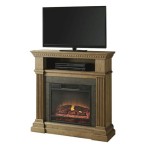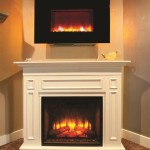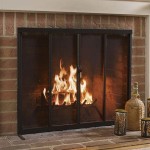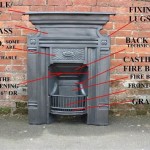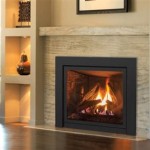Fireplace Ideas: A Guide to Stone Fireplace Designs
Stone fireplaces have long been a focal point in homes, evoking a sense of warmth, permanence, and natural beauty. The versatility of stone allows for a wide range of designs, from rustic and traditional to sleek and modern. This article explores various stone fireplace ideas, providing insights into different stone types, design considerations, and installation tips.
Choosing the Right Stone for a Fireplace
The selection of stone for a fireplace is a crucial decision, impacting both the aesthetic appeal and the longevity of the structure. A variety of factors must be taken into consideration, including the style of the home, the desired ambiance, and the functional requirements of the fireplace. Different stone types offer distinct textures, colors, and durability characteristics, each lending itself to specific design objectives.
Fieldstone, characterized by its irregular shapes and rugged texture, is a popular choice for creating a rustic and natural look. Its earthy tones and organic appearance blend seamlessly with country-style homes and cabins. Fieldstone fireplaces often feature large, randomly placed stones, adding visual interest and a sense of history.
Ledgestone, composed of thin, stacked stones, offers a more refined and contemporary aesthetic. Its clean lines and linear patterns create a sense of order and sophistication. Ledgestone is available in a variety of colors and textures, allowing for customization to match different interior design schemes. It is frequently used in modern homes and transitional spaces.
River rock, with its smooth, rounded stones, provides a unique and tactile texture. Its natural variations in color and shape create a visually appealing surface. River rock fireplaces evoke a sense of tranquility and connection to nature. They are often incorporated into designs that emphasize organic elements and natural light.
Manufactured stone veneer offers a cost-effective alternative to natural stone. It replicates the look and feel of natural stone while being lighter and easier to install. Manufactured stone veneer is available in a wide range of styles and colors, providing flexibility in design options. It is a popular choice for homeowners seeking a budget-friendly solution without sacrificing aesthetic appeal.
Beyond aesthetics, the durability of the stone is a critical consideration. The chosen stone must be able to withstand the high temperatures and fluctuating conditions associated with fireplace use. Certain types of stone, such as granite and quartzite, are known for their exceptional heat resistance and durability. It is essential to consult with a qualified professional to ensure that the selected stone is appropriate for fireplace construction.
Design Considerations for Stone Fireplaces
Designing a stone fireplace involves a myriad of considerations, extending beyond the selection of stone. The size and shape of the fireplace, the surrounding architectural elements, and the overall style of the room must be carefully integrated to create a cohesive and visually appealing design. The fireplace should not only serve as a functional heating source but also as a prominent design feature that enhances the ambiance of the space.
The size of the fireplace should be proportionate to the room in which it is located. A small fireplace in a large room may appear insignificant, while an oversized fireplace in a small room can feel overwhelming. The height of the fireplace should also be considered, as it can impact the perceived scale of the room. A taller fireplace can create a sense of grandeur, while a shorter fireplace can feel more intimate and cozy.
The shape of the fireplace can also influence the overall design. A traditional rectangular fireplace is a classic choice that complements a variety of architectural styles. A corner fireplace can maximize space and create a focal point in a room. A arched fireplace can add a touch of elegance and sophistication. The shape of the fireplace should be carefully considered in relation to the surrounding architectural elements.
The surrounding mantel and hearth are integral components of the fireplace design. The mantel provides a surface for displaying decorative items and can serve as a visual anchor for the fireplace. The hearth serves as a protective barrier between the firebox and the floor and can also provide additional seating or storage space. The materials and style of the mantel and hearth should complement the stone used in the fireplace.
The incorporation of lighting can enhance the visual appeal of a stone fireplace. Recessed lighting can highlight the texture and color of the stone, while accent lighting can create a warm and inviting ambiance. The placement and type of lighting should be carefully considered to achieve the desired effect.
The overall style of the room should be taken into account when designing a stone fireplace. A rustic stone fireplace may be well-suited for a country-style home, while a sleek and modern stone fireplace may be a better choice for a contemporary space. The fireplace should complement the existing furniture, artwork, and décor in the room to create a cohesive and harmonious design.
Installation and Maintenance of Stone Fireplaces
The installation of a stone fireplace is a complex process that requires specialized knowledge and skills. It is essential to hire a qualified professional to ensure that the fireplace is installed safely and correctly. Proper installation is crucial for both the structural integrity and the functional performance of the fireplace.
The installation process typically begins with the construction of a foundation to support the weight of the stone. The foundation must be level and stable to prevent the fireplace from shifting or settling over time. The firebox, which houses the fire, is then constructed using fire-resistant materials, such as firebrick or refractory concrete. The firebox must be properly insulated to prevent heat from transferring to the surrounding walls.
The stone is then carefully applied to the surface of the fireplace, using mortar to adhere the stones to the underlying structure. The mortar joints are typically filled with grout to create a smooth and uniform surface. The type of mortar and grout used should be specifically designed for use with stone fireplaces to ensure their durability and heat resistance.
Once the stone is installed, the chimney is constructed to vent the smoke and gases produced by the fire. The chimney must be properly sized and designed to ensure adequate draft and prevent the buildup of dangerous gases. The chimney should be regularly inspected and cleaned to remove any creosote buildup, which can pose a fire hazard.
The maintenance of a stone fireplace is essential for ensuring its longevity and optimal performance. Regular cleaning and inspection can prevent minor problems from escalating into major repairs. The frequency of cleaning will depend on the frequency of fireplace use and the type of wood burned.
Creosote, a byproduct of burning wood, can accumulate in the chimney and pose a significant fire hazard. It is recommended to have the chimney professionally cleaned at least once a year to remove any creosote buildup. Regular inspection of the chimney can also identify any cracks or damage that may require repair.
The stone on the fireplace can be cleaned with a mild soap and water solution. Avoid using harsh chemicals or abrasive cleaners, as these can damage the surface of the stone. Stubborn stains can be removed with a specialized stone cleaner. The mortar joints can be cleaned with a grout brush and a mild bleach solution.
The mantel and hearth should also be cleaned regularly to remove dust and debris. The type of cleaner used will depend on the material of the mantel and hearth. Wood mantels can be cleaned with a furniture polish, while stone hearths can be cleaned with a stone cleaner.
Proper maintenance and care will ensure that a stone fireplace remains a beautiful and functional focal point in the home for many years to come.

50 Sensational Stone Fireplaces To Warm Your Senses

50 Sensational Stone Fireplaces To Warm Your Senses

25 Stone Fireplace Ideas For A Cozy Nature Inspired Home Surround Country
:strip_icc()/Screenshot2021-10-19at09-16-46Portfolio-AmyBartlamPhotography-1f35ea9ec29846779a2d62b42676eff9.png?strip=all)
20 Best Stone Fireplace Ideas

Best Stone Fireplace Ideas

50 Sensational Stone Fireplaces To Warm Your Senses

Stone Veneer Fireplace Ideas That Will Warm Up Your Home Ply Gem

12 Stacked Stone Fireplace Ideas For Optimal Coziness

Some Stone Fireplace Surround Ideas You Ll Love Southwest Supply

28 Cozy Stone Fireplace Ideas To Make A Statement
Related Posts


